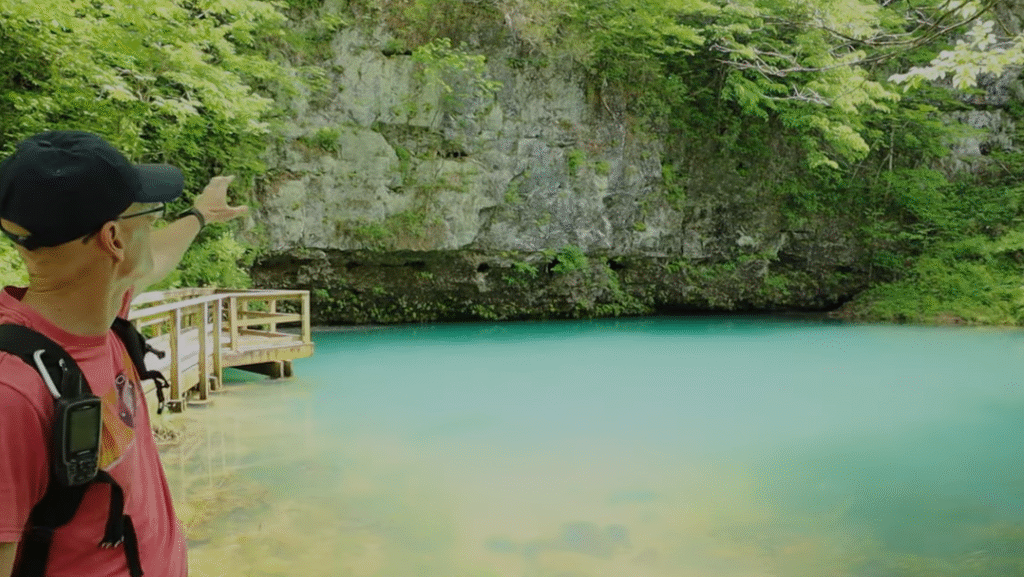Blue Springs has established a reputation for providing a lifestyle that strikes a remarkable balance between price and quality. Its allure is not limited to its size; it also combines the tranquility of the suburbs with easy access to the thriving economy of Kansas City. Locals frequently liken it to having all the conveniences of a big city without the associated financial strains. This balance has significantly improved over the last ten years as residential developments, school district investments, and infrastructure improvements have all come together to make the area more appealing.
One defining characteristic is still housing. The housing stock is surprisingly diverse, ranging from large modern construction to modest starter homes, but the median home price of about $269,300 offers an entry point that is much lower than the national average. The average rent for a two-bedroom apartment is $1,180, which is surprisingly cheap by national standards and still leaves money for other important things. Although this price point is higher than the state average for Missouri, it is indicative of the area’s ongoing growth and growing appeal.
Utility costs are typically in line with regional averages for households making budgets, but many discover that over time, the area’s moderate property tax rates have a significant impact. Residents frequently discover that their monthly expenses are much lower than those of comparable suburban areas in other states by taking advantage of advantageous local tax structures. Fuel prices and insurance rates are especially advantageous when compared to urban areas, and the costs of groceries, healthcare, and transportation are all relatively close to the national average.
Cost of Living – Blue Springs, Missouri
| Category | Data |
|---|---|
| Median Home Value | $269,300 |
| Median Monthly Rent | $1,180 |
| Annual Housing Cost | $14,160 |
| Annual Grocery Cost | Comparable to National Average |
| Annual Goods & Services Cost | Comparable to National Average |
| Estimated Annual Living Cost (Single Person) | $40,400 |
| Estimated Annual Living Cost (Family) | $51,480 |
| Living Wage (Single Adult) | $20.87/hour |
| Median Household Income | $86,219 |
| Cost vs. National Average | 11.6% Lower |
| Population | 57,661 |
| Reference | www.bestplaces.net/cost_of_living/city/missouri/blue_springs |

The employment situation in the city has gradually changed. Blue Springs offers steady employment opportunities and also serves as a commuter base for Kansas City’s more specialized jobs. It is anchored by healthcare providers such as Saint Mary’s Medical Center, robust school district employment, and a mix of manufacturing and retail. Residents can access higher-paying jobs without having to pay the higher housing costs that those jobs might require if they lived in Kansas City proper thanks to this proximity. This combination has proven to be very effective for many professionals in enabling both savings and career advancement.
Education is one of the strongest lures for families. In addition to influencing property values, the Blue Springs School District is frequently ranked among Missouri’s best, which promotes long-term settlement. For parents looking for a nurturing learning environment, the combination of committed faculty, a large extracurricular program, and low student-teacher ratios is especially advantageous. Families relocate here because of the schools, which has strengthened the community over time and made this reputation self-reinforcing.
Blue Springs’ recreational opportunities further contribute to its affordability. Parks, nature trails, and lakes are widely accessible, frequently for free, giving locals very obvious alternatives to more expensive entertainment options. Residents can spend whole weekends hiking, fishing, and having picnics at places like Burr Oak Woods Conservation Area and Lake Remembrance without having to worry about their monthly expenses. For a city in its price range, this type of lifestyle integration—where leisure, wellness, and nature all coexist harmoniously—is especially novel.
Those who keep an eye on wider patterns see Blue Springs as part of a greater trend of middle-class Americans looking for suburbs that aren’t too far away or prohibitively expensive. Migration to smaller cities and suburbs with higher housing values has been fueled by expensive metro areas in recent years. Blue Springs is a safe haven for people navigating the volatility of urban living expenses because of its easily accessible highways and commute of less than 25 minutes on average.
Additionally, there are now more dining and retail options, which makes it easier to meet everyday needs locally. Despite the region’s growth, small businesses flourish here and frequently provide goods and services at competitive prices. From new boutique fitness centers to family-run cafés, the business world has been remarkably flexible, swiftly adjusting to shifting consumer tastes and demographic shifts.
The city also excels at providing access to healthcare. Short driving distances between general practitioners and specialists help keep medical expenses under control by minimizing the need for expensive emergency travel or lengthy treatment commutes. This close proximity to high-quality care is very dependable for retirees and contributes to the general sense of security that comes with living here.
Development trends indicate that although housing prices might increase in the future, they are not likely to rise above regional averages. By taking the initiative to manage zoning and infrastructure improvements, local government has made sure that the city’s growth is sustainable. Some of the typical cost increases observed in other quickly growing suburbs have already been considerably decreased by this strategy.

